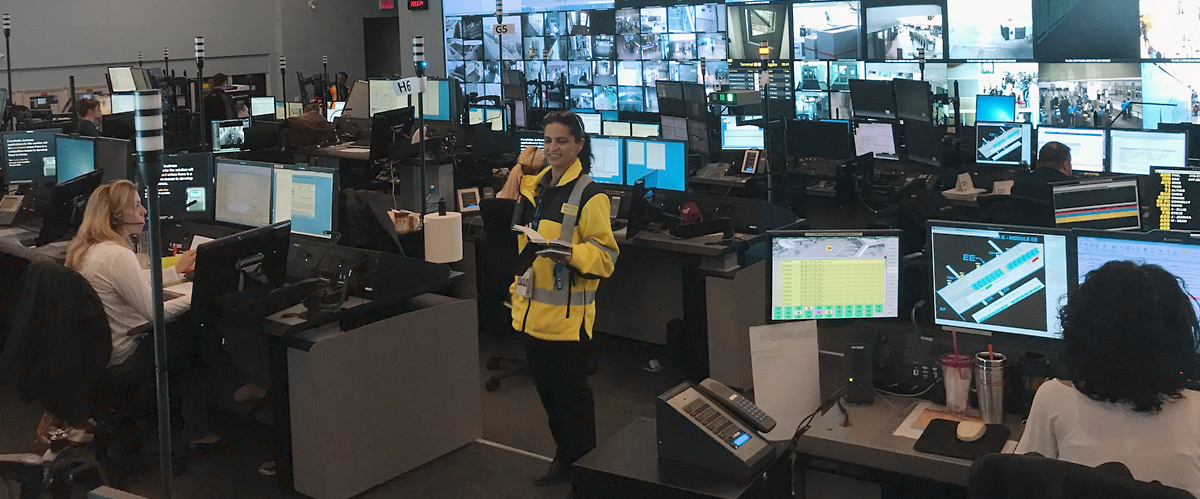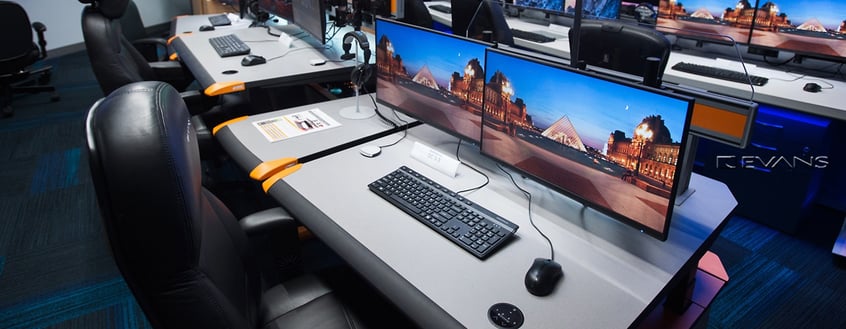In an era where technology evolves rapidly, keeping your control room up to date is crucial. This article delves into why and when upgrading your control room becomes not just an option, but a necessity and proposes best practices for planning an upgrade.
Your technology is outdated or offline.
As technology evolves rapidly, older systems become obsolete. This obsolescence might manifest in the inability to integrate with newer systems, lack of support from vendors, or the unavailability of replacement parts. If you find your control room systems struggle with inefficiencies like slow processing speeds, frequent breakdowns, or limited functionality, it could significantly hamper your operations. Upgrading can address these limitations, improving efficiency and reliability.
You often have breakdowns.
If your current control room struggles with inefficiencies like slow processing speeds, frequent breakdowns, or limited functionality, it could significantly hamper your operations. Upgrading can address these limitations, improving efficiency and reliability.
You are paying too much.
Every property needs maintenance. Imagine you've just bought a brand-new Ford, shining and flawless. In the first year, you might only spend about $300 on minor repairs – that's pretty manageable. Fast forward ten years, and your annual maintenance costs might creep up to $1,900, which is still okay. But after 30 years, if you're shelling out $3,000 each year just to keep the car running, it's probably time to consider getting a new one. This analogy applies to control rooms too. Older control rooms often need more maintenance, leading to significant costs and effort. If the expenses for maintaining your old system keep climbing, it might be more cost-effective in the long term to invest in a new system.

Your system is unsecured.
Outdated systems may lack advanced security features necessary to protect against modern cyber threats. With the increasing prevalence of cyberattacks, a system upgrade can be critical to safeguard your operations against potential breaches. One example of this kind of security vulnerability is the Colonial Pipeline Cyberattack: Hackers gained access to the Colonial Pipeline’s network using a compromised password. They infected the internal network with ransomware and demanded payment in cryptocurrency. This attack forced Colonial Pipeline to shut down 29,000 miles of gasoline pipelines, resulting in a gas shortage across the country. The company paid a $4.4 million ransom and had 100 gigabytes of data stolen.
Your system doesn't comply with regulatory standards.
Regulatory standards for safety, security, and operations are continually evolving. If your Mission-critical operations fall out of compliance with the latest regulations, upgrading can ensure that you meet these new legal standards.
You can't analyze big data.
Modern control rooms offer advanced data analytics tools that can provide deeper insights into your operations. If your current systems lack these capabilities, you might be missing opportunities to optimize processes and make data-driven decisions.
Your operators complain.
The usability of the control room impacts operator efficiency and job satisfaction. Advances in HMI (Human Machine Interface) design and ergonomic considerations can make control rooms more intuitive and comfortable, leading to better performance and reduced operator errors. Operators who work in the control room daily are a valuable source of insight. If they express frustration with the current system's limitations or difficulties, it's a strong indication that an upgrade could be beneficial.
Consider some simple examples:
Most consoles 20-30 years old lack features like personal heating, large and adjustable displays, cup holders (especially useful stuff for operators who work shifts).
Aged control rooms mostly functioned using traditional Human Machine Interfaces, while modern HMI design techniques can enable improved performance. An improved HMI can lead operator detection of irregular conditions often before an automated alarm triggers.
System Audit and Risk Assessment
Begin with a comprehensive audit of your existing control room. Identify its weaknesses, evaluate the risks of maintaining the status quo, and assess the potential improvements a new system could bring.
Research and understand Technological Advancements
Explore the latest technologies in control rooms. Look for features that can significantly enhance operations, such as high-performance HMI, improved user interfaces, better integration with other systems, and advanced data analytics capabilities.
Undertake a Cost-Benefit Analysis
Upgrading the control room is a significant investment. Conduct a thorough cost-benefit analysis, considering not just the immediate costs but also the long-term savings in efficiency, reduced downtime, and improved safety.

Stakeholder Involvement
Involving key stakeholders, such as operators, technicians, management, and even end-users, from the very beginning of the planning phase is essential for the success of any control room upgrade. Their insights and experiences ensure that the upgrade is not only technically sound but also practically aligned with actual operational needs. Operators, being on the front line, can offer firsthand information about the current system's limitations and potential areas of improvement. Technicians can advise on the feasibility of proposed changes and suggest innovative solutions. Management's involvement is crucial for aligning the upgrade with broader organizational goals and ensuring that there is adequate resource allocation.
Phased Approach
Adopting a phased approach to upgrading your control room is a strategic method to minimize disruptions and maximize efficiency. By breaking down the upgrade into distinct phases, such as planning, implementation, testing, and evaluation, you can ensure that each aspect of the system is given the attention it deserves.
Training and Transition
Investing in comprehensive and targeted training for your operators is crucial when implementing a new control system. This approach not only enhances their skills but also ensures they are fully prepared to manage the system efficiently. A new control system's effectiveness is linked to the proficiency and confidence of the people operating it. To ensure a smooth transition, it is vital to provide continuous support and resources. This includes detailed training manuals, hands-on training sessions, and access to quick assistance when needed. Additionally, consider implementing a phased training approach, where operators are gradually introduced to more complex aspects of the system. This strategy helps in building a strong foundation of knowledge and reduces the risk of overwhelming your team. Regular feedback sessions and follow-up training can also be beneficial, allowing operators to stay updated with any system upgrades or changes.
Sounds simple? Candidly it is not and with the long-term impacts of upgrading a command-and-control room facility doing it correctly the first time is essential. Evans has implemented over 12,000 controls across multiple market segments from Public Safety to Oil and Gas. The only thing these various projects have in common is the expertise that comes from 40 + years of experience. Regardless of the scope you require, from an initial site audit to a fully managed project we can help you in every step along the way.
With an upgraded control room, you'll save money on maintenance while boosting your operator's productivity. But the update is just the tip of the iceberg when it comes to continuous improvement. Keeping an eye on the latest tech trends is key to staying ahead of the game.
Subscribe to our blog today for expert tips, news, and insights on the control room industry.